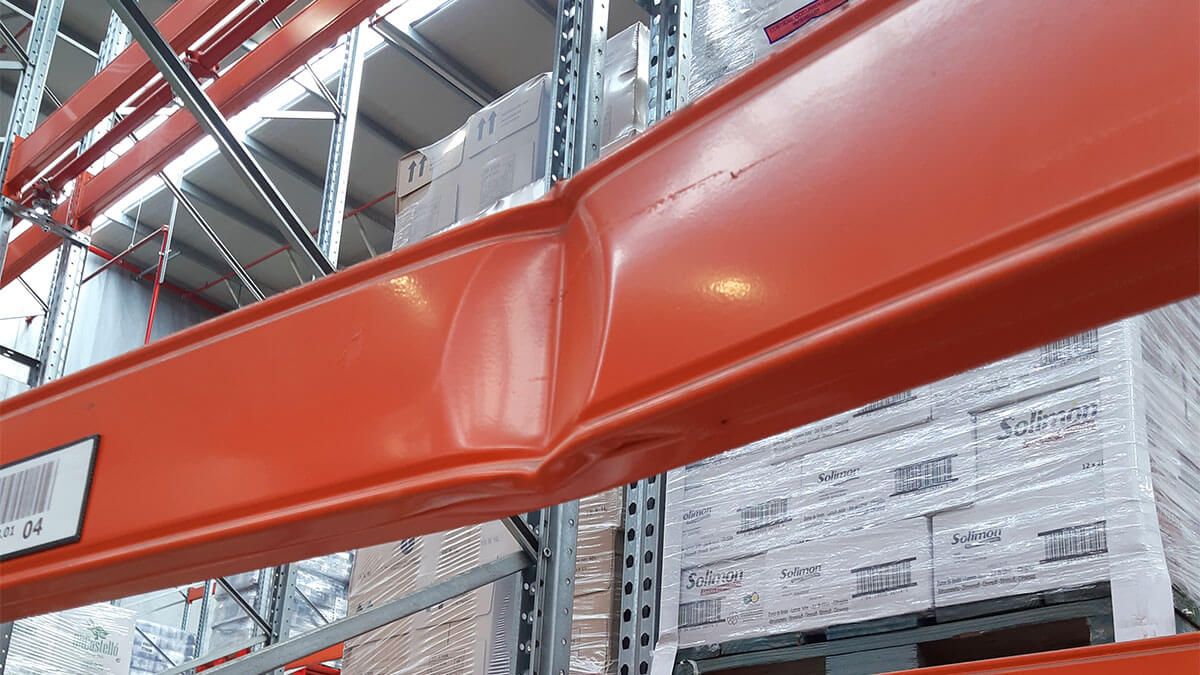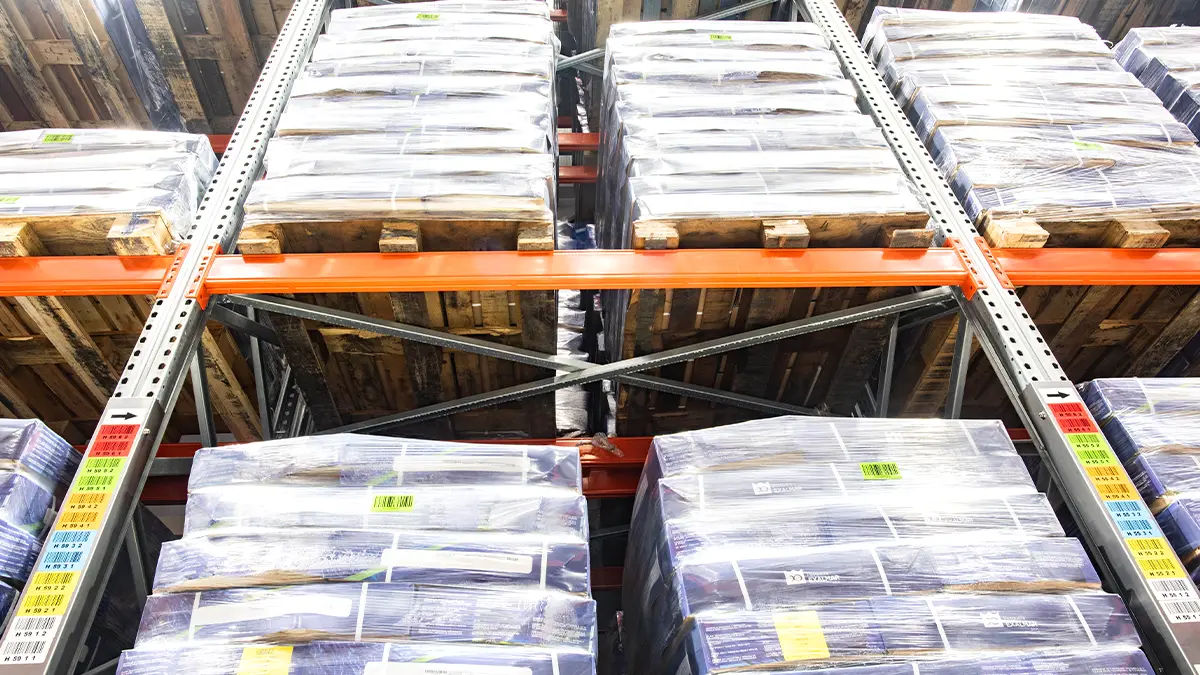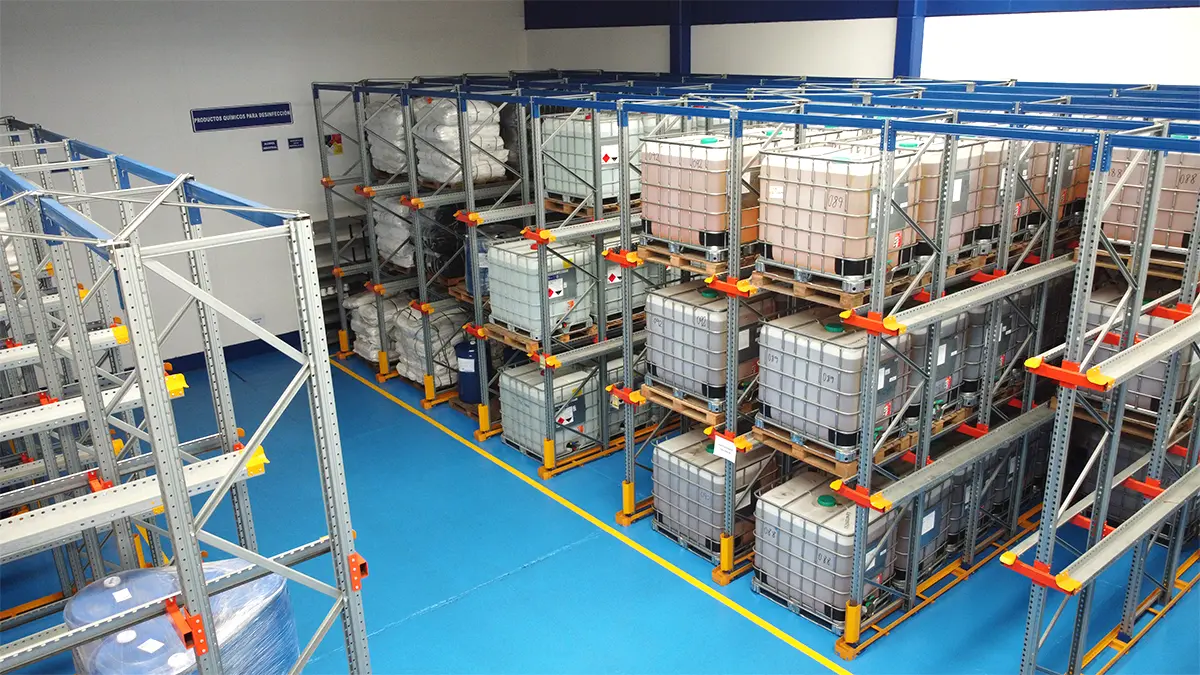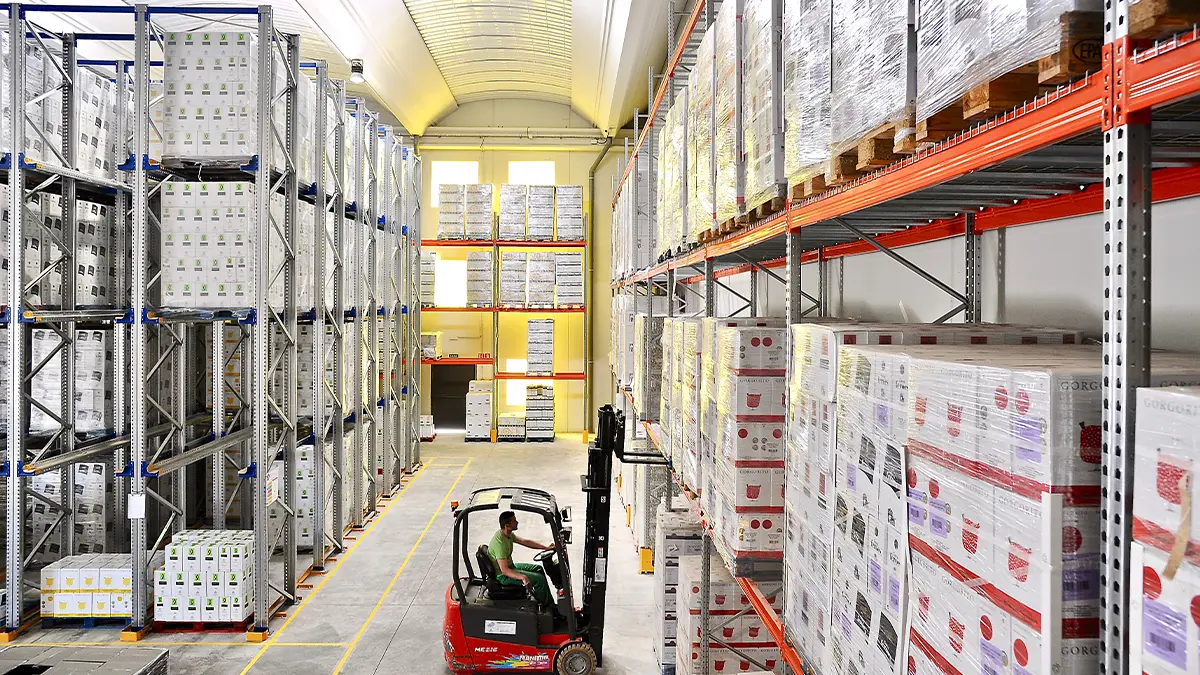Dealing with damaged industrial racking poses a potential risk to the physical integrity of employees and also to the operational efficiency and reputation of the company.
At AR Racking, we understand the critical importance of appropriately and quickly addressing any situation involving damage to industrial racking. We discuss in detail below how to deal effectively with damaged racking, ensuring safety and protecting stored products.
How do you identify damaged industrial racking?
To identify damaged racking, it is important to carry out a detailed visual inspection, looking for any signs of visible damage, such as deformation, cracks, corrosion or broken welds, and checking to see if the racking is correctly levelled and for any loose or misaligned components. It is also crucial to detect signs of structural damage, such as changes in the stability or tilt of the racking. Finally, it is necessary to evaluate the load capacity of the racking, ensuring that the established limit is not exceeded to avoid any risk of collapse.
Visual inspection of the racking
Carry out a thorough visual inspection of the damaged racking to identify any type of deformation, corrosion or cracks and examine the racking components, such as the uprights, beams and brackets, for any sign of visible damage. Look also for any changes in the shape or alignment of the structure to ensure its integrity. It is also vitally important to check if the racking is levelled correctly and if there are any misaligned or loose components that could compromise its stability.
Detection of signs of structural damage
Once it has been visually inspected, it is essential to detect signs of structural damage to a racking unit to ensure its safety. Carefully observe if the racking shows signs of tilting, movement or instability, as these may be indicative of serious damage to the structure. It is a good idea to listen out for any unusual noises, such as creaking or squeaking, which could be signs of damaged components. Additionally, check for changes in the alignment of the brackets, uprights or beams and if any of these signs are detected, it is important to take immediate action to avoid potential risks.

Evaluation of the load capacity
Evaluating the load capacity of damaged racking is essential to ensure safety and prevent possible accidents. The specifications provided by the manufacturer must be reviewed to determine the allowable load limit and check that it has not been exceeded. It is also necessary to examine the integrity of key racking components, such as beams and brackets, to identify any structural damage that could affect their load-bearing capacity. If necessary, load tests should be carried out to ensure that the racking can support the required weight. If any reduction in load capacity is observed, steps must be taken to repair or replace the racking before returning it to use for storage.
Safety measures for damaged racking
When dealing with damaged racking, it is essential to take appropriate safety measures to avoid possible accidents. Staff safety is the most important thing, so established protocols must be followed. These measures include removing the load from the damaged racking, isolating the affected area and immediately informing those responsible in the company.
Remove the load from the damaged racking
In the event of damaged racking, it is crucial to safely remove the load to prevent any further risk. Appropriate tools must be used and the help of trained personnel sought to perform this task. It is important to clear the area, make sure there are no people nearby, and use personal protective equipment to avoid injuries during the process.
Isolate the affected area
Once the load has been removed from the damaged racking, it is necessary to isolate the affected area to avoid possible accidents or injuries. This involves clearly delimiting the damaged area, placing warning signs and physical barriers if necessary. Additionally, access to unauthorised personnel must be restricted in order to ensure the safety of all employees and visitors on site.
Inform those responsible in the company
As soon as a damaged racking is detected, it is essential to immediately inform those responsible in the company. They must be notified so that the necessary measures can be taken and the damaged fully assessed. A detailed report must also be provided on the condition of the racking and safety measures adopted to guarantee prompt intervention and repair.
How should a racking unit be repaired?
Repairing damaged racking is essential to ensure the safety and proper functioning of the storage system. There are several steps that must be followed to properly repair damaged racking.
Firstly, it is advisable to hire a racking repair specialist. These professionals have the necessary knowledge and experience to evaluate and solve racking structural problems. It is also important to replace damaged components. This may include repair or replacement of damaged beams, brackets and connectors.
Once the repair has been completed, it is essential to carry out load and safety tests. These tests allow us to check that the racking is in optimal conditions to support the product load.
Hire a racking repair specialist
To repair a damaged racking unit, it is highly recommended to hire a racking repair specialist. These professionals have the necessary technical knowledge to evaluate structural damage and determine the corrective measures required. Hiring a specialist ensures that the repair will be carried out safely and efficiently, according to current standards and regulations. These experts can also offer additional recommendations to prevent future damage and improve the durability of the racking.
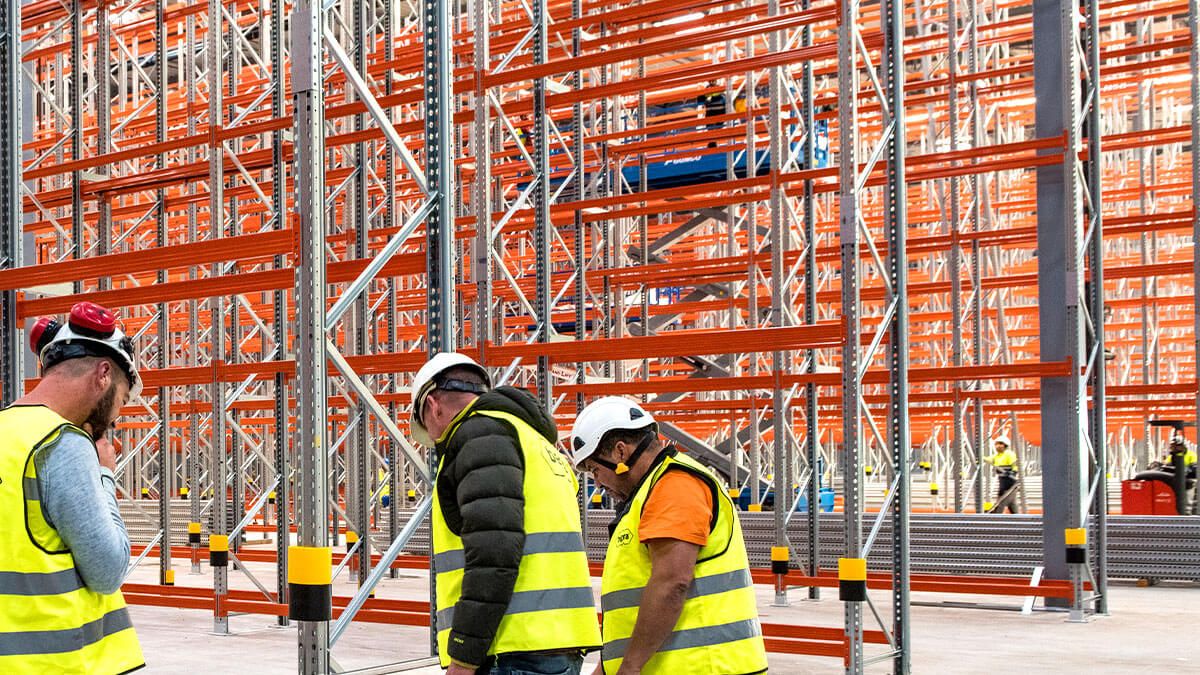
Replace the damaged components
If a racking unit has damaged components, it must be replaced to restore the structural integrity of the system. Damaged components can compromise the load capacity and stability of the racking, jeopardising the safety of stored products.
To replace damaged components, it is necessary to identify and purchase the appropriate replacement parts; these parts may include beams, brackets and connectors that are affected by the damage. Once the new components have been obtained, they are installed according to the manufacturer's instructions, thus ensuring that the racking recovers its original functionality and load capacity.
Carry out load and safety tests
Having repaired a damaged racking unit, it is essential to carry out load and safety tests to check its correct working. These tests consist of subjecting the racking to a weight greater than the maximum expected load, to assess its strength and stability.
The use of specialised equipment is recommended to measure the load capacity and detect any deformation or abnormal movement during the testing process. It is also important to check that safety procedures, such as the floor anchoring system, are properly installed and functioning. Only after successfully passing the load and safety tests will the racking be considered to have been adequately repaired and ready to be used with confidence again.
What can you do to prevent damage to pallet racking?
To avoid damage to racking, it is important to implement appropriate prevention measures. One of these measures consists of training staff in the proper use of racking. It is essential that employees are familiar with best practices for safely loading, unloading and moving products on racking units.
They should also be taught to identify signs of structural damage and evaluate the load capacity of the racking to avoid exceeding its limits and to prevent accidents. Ongoing and refresher staff training is key to maintaining the integrity of the racking and ensuring safety in the work environment.
Train staff in proper racking management
Staff training is essential to reduce the risk of damage to racking. All employees who interact with racking systems must receive appropriate training on how to use them safely. This includes instructions on how to properly load and unload products, how to avoid overloading racking, and how to move items appropriately. It is also important to make employees aware of the importance of immediately reporting any damage to or defect in the racking so that necessary action can be taken.
Carry out periodic inspections of the racking
Carrying out periodic inspections of the racking is a key measure to prevent damage. These inspections must be carried out on a regular basis, evaluating both the structure and components of the racks. Anchors, joints, profiles and fastening elements must be checked for any signs of wear, corrosion or damage. Likewise, load levels must be checked and also ensured that the racking is not overloaded. Therefore, if any problems are identified during the inspection, necessary measures must be taken to repair or replace damaged components.
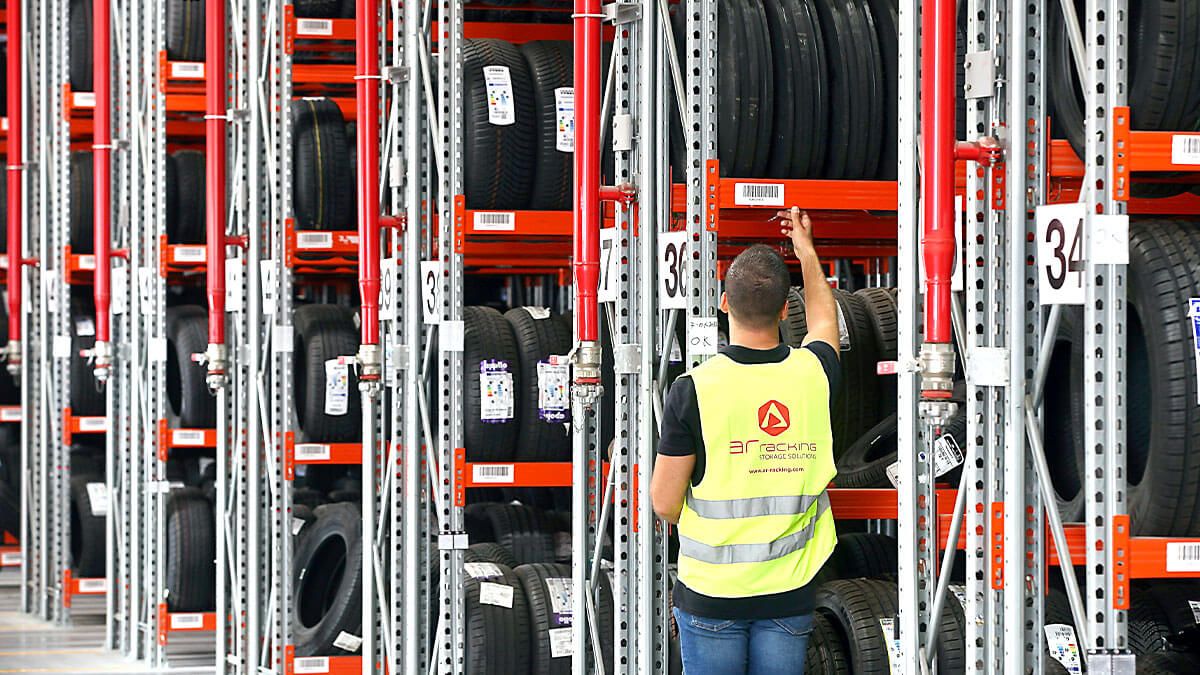
Keep a maintenance and repair record
It is important to keep a detailed record of all maintenance work performed, as well as repairs carried out in the event of damage. This record must include the date of inspections, any repair work performed, and any components that have been replaced. The results of the load and safety tests carried out must also be documented.
This record will provide a complete history of the actions taken and enable appropriate monitoring of the condition of the racking over time. Keeping a maintenance and repair record is therefore essential to ensure the traceability and integrity of the racking, as well as to make informed decisions about its ongoing maintenance.
At AR Racking, we understand the importance of maintaining a safe and efficient work environment. That's why we not only offer innovative solutions for storage systems, but are also committed to ensuring their integrity over time. We carry out regular inspections to detect any signs of wear or damage to your racking, ensuring the safety and functionality of your storage space.
If you need more information, advice or would like to request a quote on industrial racking for your warehouse, simply visit our website, and our experts will advise you on the best storage solution.










